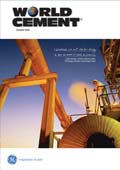Editorial comment
In any one year there are always anniversaries to remind us of the achievements by the famous, or infamous, or of events that have affected the lives of millions.
Register for free »
Get started now for absolutely FREE, no credit card required.
In any one year there are always anniversaries to remind us of the achievements by the famous, or infamous, or of events that have affected the lives of millions. This year must be exceptional, especially as a number of outstanding anniversaries have been highlighted and commented on in the global media. Such events inevitably throw up arguments as to which has had the greatest inluence in the world. Would it be Dr Samuel Johnson, born 300 years ago this year, who was described as “the most distinguished man of letters in English history”, the creator of The Dictionary of the English Language, published in 1755; or Charles Darwin, the naturalist, born 200 years ago, whose book, published in 1859, On the Origin of Species, and whose theories continue to be challenged? Moving into more modern times, how does the inluence of the outbreak of the Second World War in 1939 compare with the significance of Neil Armstrong and Buzz Aldrin being the first men on the moon forty years ago? The argument is more likely to centre around how significant was an event at the time compared with what followed later?
Well, last month there was another anniversary, one that can hardly have escaped readers’ attention; the collapse a year ago of Lehman Brothers, the biggest banking failure in history. It resulted in surely the worst stock market crash ever seen, succinctly summed up by a commentator as “the day when global finance suffered a near fatal heart attack”! The patients, i.e., the world’s financial institutions, are slowly recovering as a result of injections and transfusions from their respective governments, but it could still be many months before they can be taken off their life-support mechanisms; it all depends if there are any relapses along the way. It is hoped that the quality and levels of banks’ capital will be improved after the crisis has eventually abated. A recent article in the business press mentions that ‘living wills’ could force banks to plan their own collapse, making it easier to protect depositors while forcing creditors and not tax payers to suffer the pain.
If there are green shoots beginning to appear in the western world, it appears that these are nothing compared to the lush growth shooting up in Asia’s emerging economies. Emerging Asia, according to reports from Barclays Capital, is the only region in the world where output has regained its level before the crisis. While it is claimed that this is largely due to China, where industrial production rose by 11% in the year to July 2009, all the Asian countries have seen a strong pick-up. An economic journalist writing from Hong Kong mentions that recent forecasts have suggested that emerging Asia in 2009 could grow by at least 5%, while the G7 economies contract by 3.5%. The growth gap between the two has never been wider. Naturally there are pessimists that argue that Asia’s growth rate is not sustainable and in fact it could be much slower than before the crisis. Did we hear something like this before, perhaps during the Asian crisis in 1997?
Asia is very much at the centre of this month’s issue, with articles on some of the latest developments in the cement industry in India and China researched and written by our own editorial team, and on Pakistan from Cement Pakistan Company.
Incidentally, when in 200 years the historians come to research what happened on 15 September 2008, one can only wonder if it will be regarded then as an event that changed the world, much as those mentioned earlier, or could it be that another economic earthquake even more devastating ends itself on at prime time on the History Channel?


